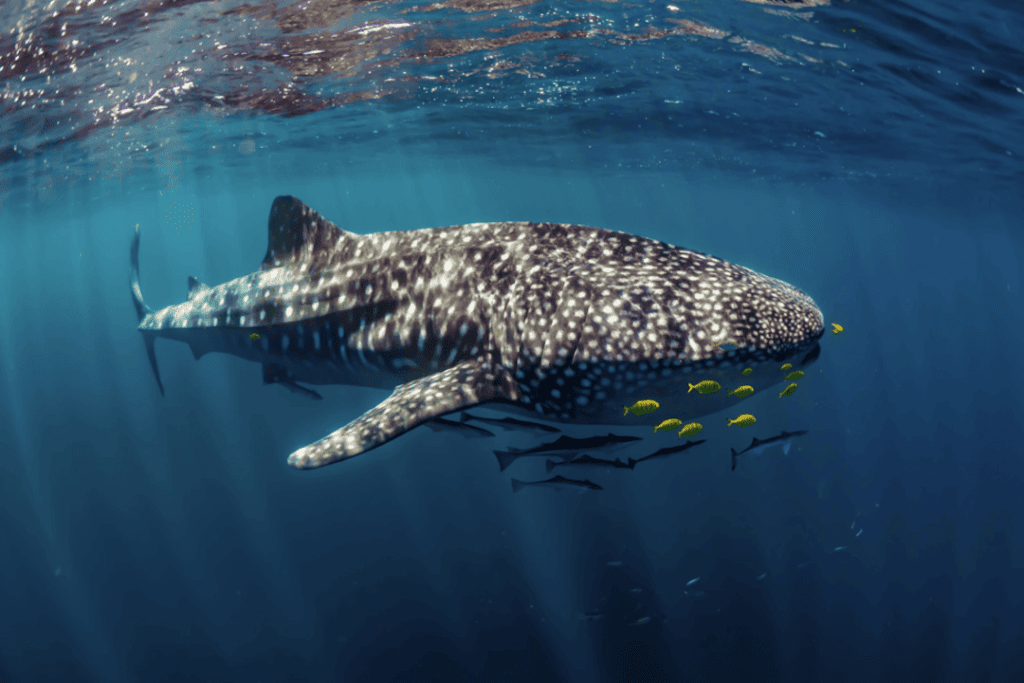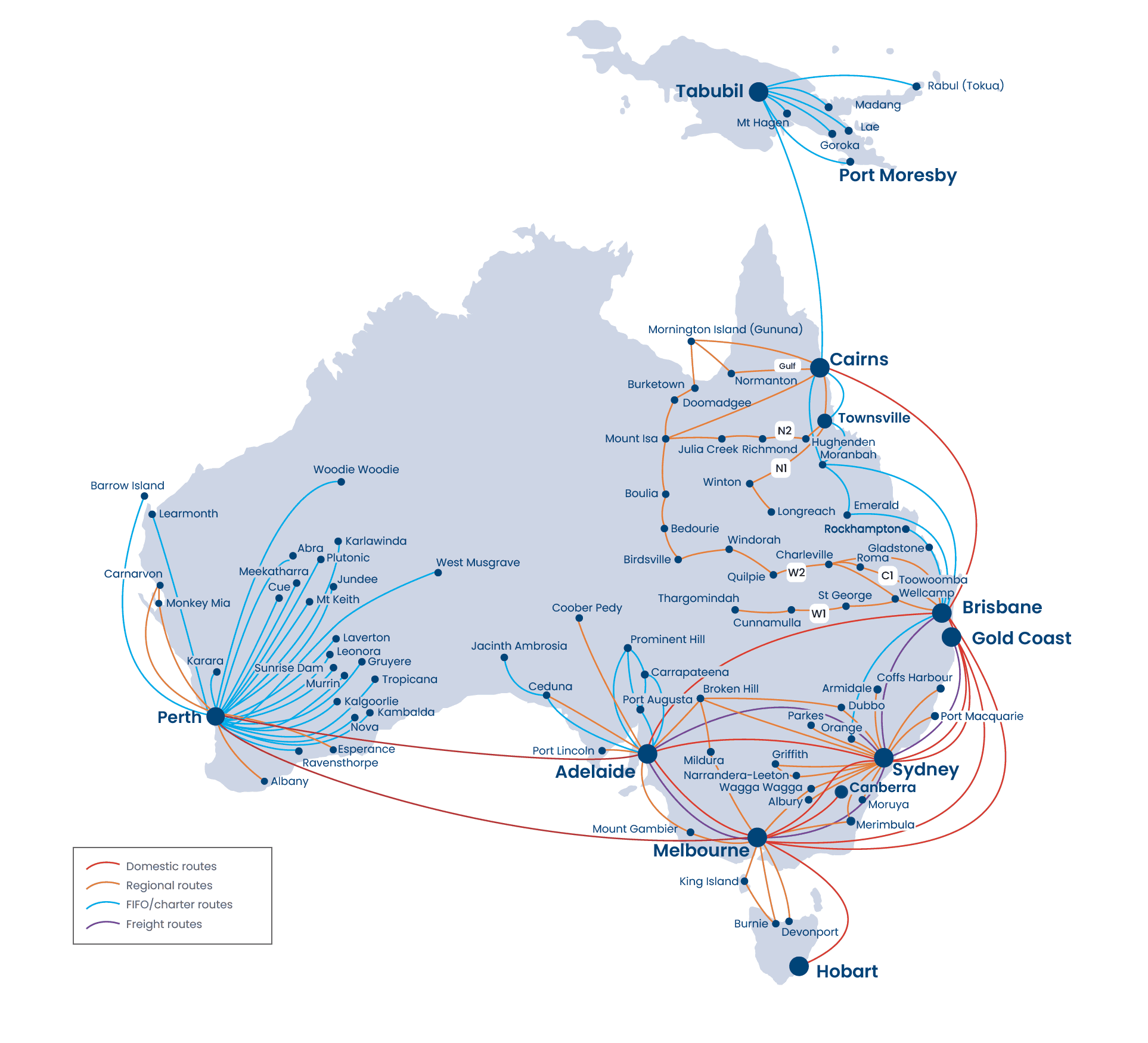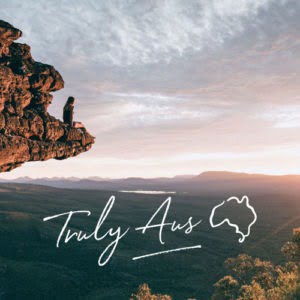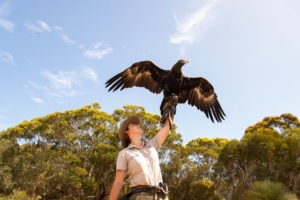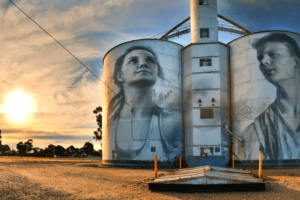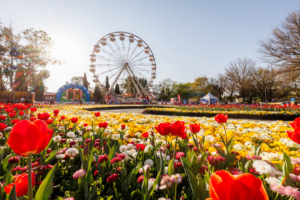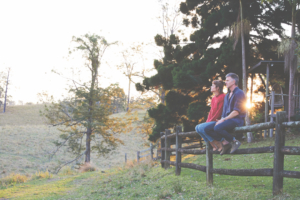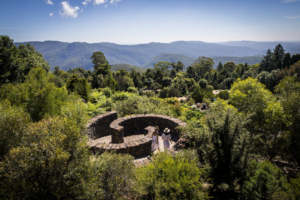Most people journey to Ningaloo Reef cradling a dream of swimming with whale sharks.
That’s completely understandable, but it’s just one of the many reasons that this heritage-listed reef should be topping your bucket list.
Opening image: Whale Shark. Image: Ocean Eco Adventures.
Whale, Dolphin and Turtle Tour
Jimmy, the skipper and owner of Ocean Eco Adventures, is deftly guiding out his gleaming 20 foot vessel – Latitude 22 – through thriving patches of corals and swathes of sea grass in a kaleidoscope of fluttering greens. The water is so clear I can see the intricate patterning of some fish as they playfully dart in and out of their underwater forest, the sun reflecting off their scales. “We call this tiger shark highway ‘cause there’s so many of them,” says Jimmy with a hearty laugh as three large green turtles glide across our lane.
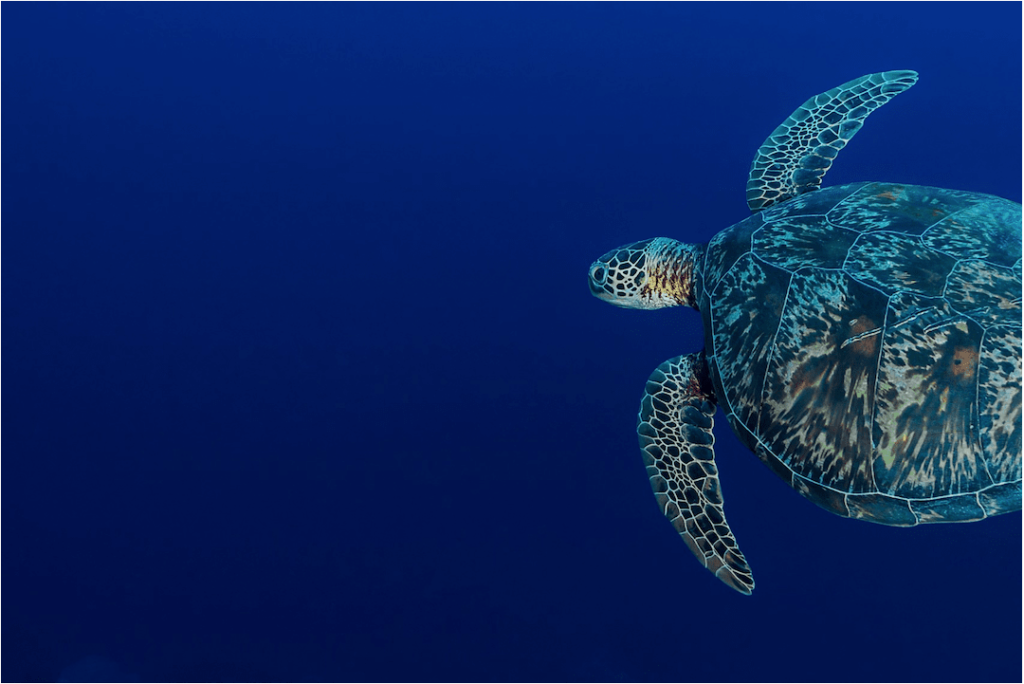
A woman on the lower deck squeals with excitement as she clicks some photos of the shiny shells the size of large ponchos. Barely a minute later there’s a loud shout from the stern of the boat — ‘Whales!’ — and I look around to see two humpback whale tails slapping the surface of the water barely 20 metres from us. One whale does a backward flip of a breach and the two giants cavort about to a chorus of ‘Ohhhs’. I don’t know where to look when a young child yelps and shouts to her mother – ‘dolphins mummy!’ So there are – three of them frolicking in our slipstream.
Welcome to Ningaloo Reef – a 260 kilometre stretch of fringing reef that is home to 200 species of hard coral, 50 soft coral and over 500 species of fish – the biggest of which we are all here today to swim with. To say that the reef is teaming with marine life is an understatement. We’ve already seen a pod of orcas and a fever of stingrays, and we haven’t even made it to the patch of ocean that the spotter planes have identified as hosting whale sharks today. To add to the excitement of the 20 guests on board Latitude – who are mainly from the East coast where winter has been harsh for Australian standards – the sun is shining and the water is warm. Having all been in for a couple of snorkels, we’re already kitted out in thick wetsuits we’re all on a natured-inspired high.
Whale Shark Wonders
Jimmy stops the boat and the crews– most of them marine biologists with more than one impressive hat – gather together to deliver the highly anticipated news that a whale shark has been spotted, and we’re only 20kms away from it.
The procedures everyone out here has to follow are rigid, ensuring that everyone stays a safe distance from the whale sharks, that can grow up to 12 metres in length and can live until 100. We’re told that the ones in this reef are usually male and around 4 to 8 metres, and we’re given the lowdown on the whale shark’s expected behavior. There’s nothing to be scared of, we’re assured, except for one bumping into you, as the sheer weight of its more than ten tonnes is enough to knock anyone out. The whale shark is a filter feeder – living on macro algae, plankton, krill, Christmas Island red crab larvae and small nektonic life, such as small squid or vertebrates.
After the briefing, we all eagerly watch the water as Latitude glides to the place the spotter planes have singled out. Jimmy is on the radio sharing the coordinates with the four other boats out on the reef, as in true Aussie spirit, if only one or two whale sharks are spotted, everyone ‘shares the sharks’, the crews making sure everyone gets their special time swimming in the water with it. The friendly yet highly competitive banter on the radio is a comic routine but one that is necessary to keep all businesses on the reef working together and for the same cause – protecting Ningaloo and her many living assets.
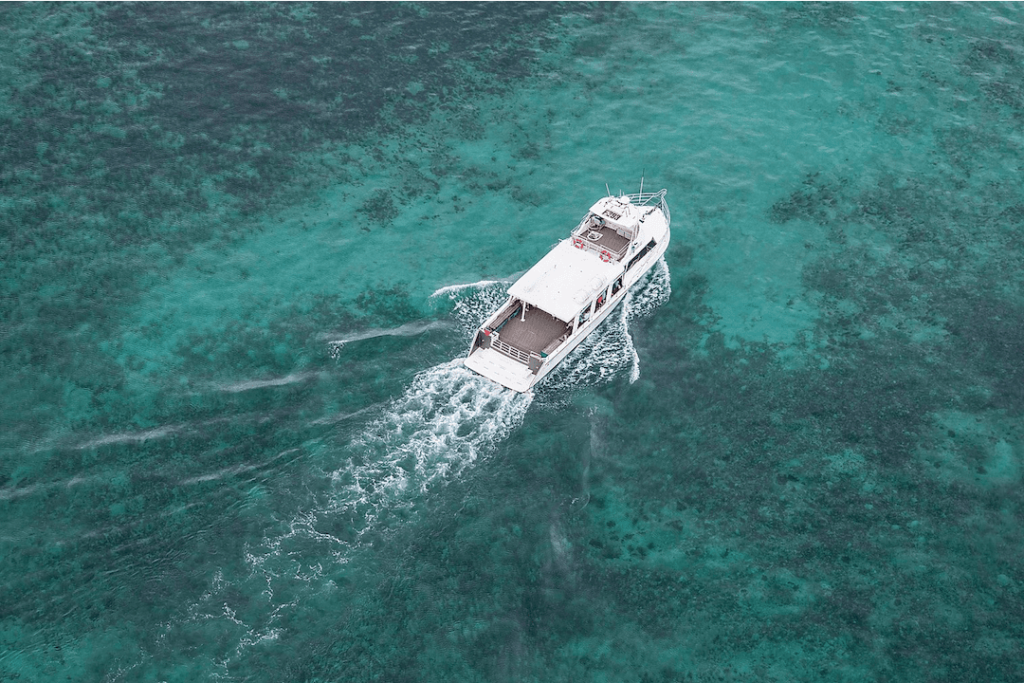
Snorkeling at Ningaloo Reef
Ten minutes later, Latitude slows and is positioned in ‘the spot’. Two teams of ten snorkelers are formed and we all sit on the edge of the stern, flippers above the water, goggles and go-pros in place. Then it’s all suddenly on, endless bubbles and the wonderfully warm waters of Ningaloo having engulfed me. We all snorkel in a line behind our leader and before I know it, through the blue mass glides a shape I’ve been longing to see in the wild for over a decade.
He’s slow and graceful, large and purposeful. He’s just cruising along with his filter-feeding mouth wide open in a sort-of-semi smile, consuming all manner of sea morsels as he moves towards and by us. I forget to kick. Or breath. I’m just hanging there, ogling him. Then my group all start swimming and he’s below us, about five metres down. For a fleeting moment, I am swimming alone with the biggest fish in the ocean – the winter sunlight streaming through the gaps in my lanky limbs, lighting up the big cartoon-like spots on his back. I see my shadow on him, and then he disappears into the deep blue and I am left there elated, floating, staring bug-eyed out into Ningaloo.
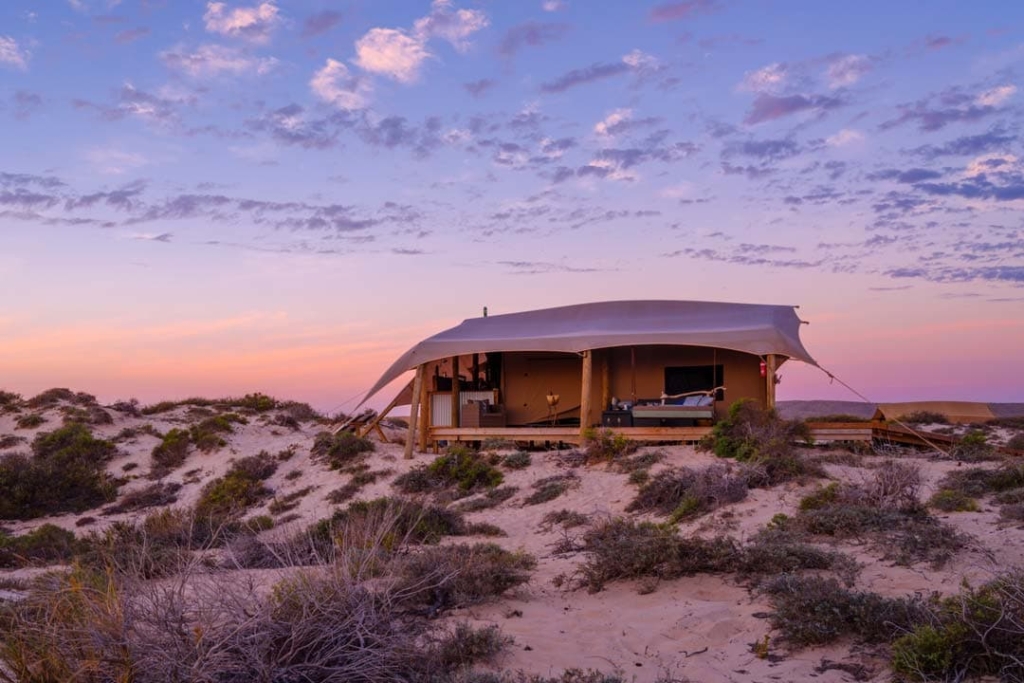
Sal Salis Sand Dunes
There’s a million shining stars in the sand dunes, and it’s not the Milky Way — insanely clear when there’s no light pollution — that has fallen from the sky. It’s the minute eyes of hordes of wolf spiders sparkling back at me like diamantes from their sandy haven. The harmless spiders many pinprick sized eyes reflect my torchlight as I stop to see the phenomenon en route to canapés and drinks on the outdoor dining balcony of Sal Salis. Remarkable.
The wildlife and wilderness at Sal Salis is what draws lovers of this eco tent resort a 45-minute drive out of Exmouth. Everything about Sal Salis is centred upon its conservation and sustainability ethos – from the tents that are on elevated wooden posts to minimize impact on the ground, to the eco non-flushing toilets and the showers that give guests 20 litres of water brought in from Exmouth every day. The wonderful staff at this resort, managed by Will and Kate, are all in love with nature and the great outdoors, most of them also being quailed biologists and scientists.
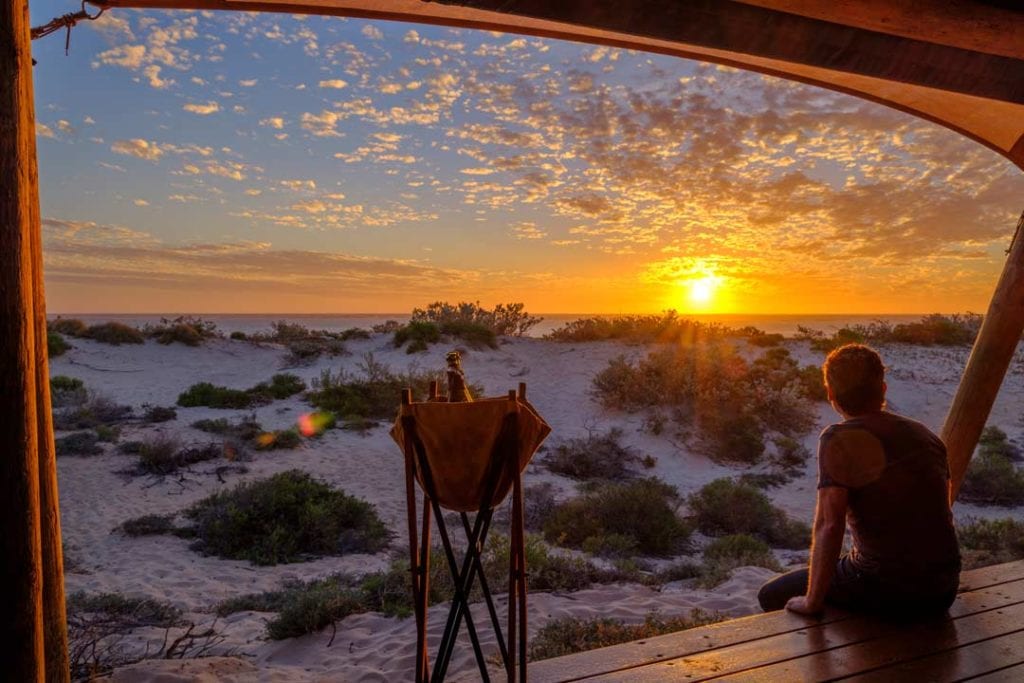
Camping on the Coast
Every evening, guests from the nine tents (think glamping: floorboards, fine linen on king sized beds and your own little deck with hammock and arm chairs) meet at the one communal area, which consists of a lounge and reading area, an undercover dining area, and a pontoon-like balcony that hosts the main dining table seating up to 20 people. The chef is superb – dishing up canapés, entrees, mains and deserts that are not only well considered (she has to think carefully about every ingredient as it all has to be delivered from town) but delicious, with some fun and cleverness thrown in. From risotto balls and cheese platters to chili mussels, lamb shanks and red wine marinated pears with ice cream, this outback chef knows how to make simple food shine.
Guests at Sal Salis have all-inclusive packages, which takes in accommodation, food and beverages (all wines are top Aussie gems), and activities such as guided bush walking and trekking in the nearby gorges, kayaking, fishing and snorkelling.
On my last day, before the sun went down and the chill of a desert winter settled upon me, I went drift snorkelling a few minutes walk from my tent. I was only a metre above an abundant coral reef, a few metres from the shore, and I just let the current take me. Thousands of fish swam around me, little puffy, slim, poky and flat faces of curiosity staring up at me from within their homes of coral, sand and seaweed. At one point, completely mesmerised by my body being carried gently along through an unbelievable mass of lively marine life, a school of parrot fish came flying towards me, then swirled out in a silky fan of colour to either side of me as I glided through them.
There I was – ogling again, mouth unattractively agape, floating. I felt like a giant fish adrift in Ningaloo.
Enjoyed this story on Ningaloo Reef? Try checking out our article on the best nature and wildlife experiences in the country!
Or if you’re ready to see Ningaloo Reef for yourself, have a look at the Rex route map to plan your big adventure.

